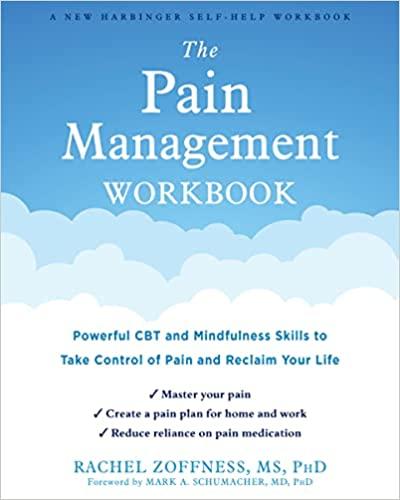
- Discuss the statement that knowledge management is a business process, not a technology.
- Discuss the benefits and challenges of implementing knowledge management systems.
- What measures can be used to encourage employees to surrender their knowledge and experience to help build a knowledge management system?
- You have been tasked to justify the investment in a knowledge management system. What is the productivity paradox when it comes to investments in information technology? How will you justify the investment, keeping in mind the productivity paradox?
Case Studies Case One The NA.SA Knowledge Map At 11,38 a.m. on January 28, 1986, the space shutte orbiter Challenger launched from Cape Canaveral, Florida. Less than a second later, graxy smoke streamed out from a hot flare burning in the rocket motor. The flare ignited liquid hydrogen and nitrogen inside the fuel tank, which exploded 73 seconds after liftoff. The Challenger was torn apart, and all seven astronauts were killed. In the days and weeks following the disaster, it became clear that two O-ring seals within the rocket booster had failed. Engineers working for the space agency had wamed of just such a failure. In particular, they had expressed concerns that the O-ring seals could fail when outside temperafures dropped below 53 degrees Fahrenheit. On the moming of January 28 , the temperature was 36 degrees. The launch pad was covered with solid ice. In response to the Challenger disaster, NASA established the Program and Project Initiative whose purpose was to improve individual competency for NASA employees-and to pervent another catastrophe. The Challenger, however, was followed by the failure of three expensive Mars missions. The software system used for the Mars Climate Orbiter mission erred when one part of the software used pound-force units to calculate thrust, whereas another part used the newton metric unit. Less than a month later, the Mars Polar Lander crashed into the surface of the planet at too high velocitytriggering the failure of a concurrent mission, the Mars Deep Space 2 probes. A review of the Deep Space 2 mission revealed that NASA engineers had decided to skip a complete system impact test in order to meet the project's tight deadline. In the wake of these failures, NASA sought to improve communication and collaboration among teams. Yet in 2003 , a large piece of insulation foam broke off from the Columbia space shuttle during launch, creating a hole in its wing, ultimately causing a catastrophic breach of the shuttle during reentry; again, all seven astronauts on board were killed. These terrible losses brought about a fundamental change in NASA's approach to knowledge management. In 1976 , NASA had created the Office of the Chief Engineer (OCE), which was initially staffed by only one employee whose job was to offer advice and expertise on NASA's dministration. In response to the Challenger disaster, NASA tablished the Academy of Project/Program and Engineering tadership (APPEL) as a resource for developing NASA's chnical staff. In 2004, the agency moved APPEL to the OCE order to promote talent development through the analysis of lessons learned and through knowledge capture-the codifieation of knowledge. The purpose was to improve not only individual but also team performance and to overcome the disconnect between the different engineering and decision-making teams across the huge onganization. The overarching goal was to create an organization that learns from its mistakes. APPEL. emphasized not only technical trom its mistakes. APPLL emphasized not only technical exaining curriculum but also the sharing of practitioner NASA furthered this initiative and established the role of NASA furthered this initiative and established the role of and explicit knowledge. Today, the agency has an extensive knowledge management system called NASA Knowledige Map, which is a tool that helps employees navigate the enormous collection of knowledge within NASA. The map encompasses six major categories: (1) Case Studies and Publications, (2) Face-to-Face Knowledge Services, (3) Onlin Tools, (4) Knowledge Networks, (5) Lessons Learned and Tools, (4) Knowiedge Networks, (5) Lessons Learned and Knowledge Processes, and (6) Search/Tag/Taxonomy Tools Fifteen organizations within NASA contribute to Case Studies and Publications. The Goddard Space Flight Center for example, publishes studies that range from analysis of th Challenger disaster to an analysis of a protest submitted by NASA contractor who lost a follow-up contract. The latter case may not seem critical, but in one such case, the Office Inspector General had to launch a formal investigation th cost NASA time, money, and energy. This case study was then integrated into the APPEL. curriculum with the goal avoiding the mistakes that led to the protest. The Johnso Space Center issues oral history transcripts, as well as newsletters, case studies, and reports. The Jet Propulsion Laboratory publishes conference papers and a Flight Anatomy wiki that tracks prelaunch and in-flight anomal Face-to-Face Knowledge Services comprise progran that are conducted in person at many locations, includin example, workshops presented by the NASA Engineerir and Safety Center. Within the Online Tools category are video libraries, portals, document repositories, and synchronous and asynchronous collaboration and shari sites. Some of these tools are quite sophisticated. For example, Human Exploration and Operations (HEO) d, a GroupSystems Think Tank decision support tool to improve group decision making. The Knowledge Netr category includes information about formal and inforr communities of practice, mass collaborative activities, methods for locating and accessing experts, and grou workspaces for projects such as static code analysis. Twenty organizations within NASA contribute dat Lessons Learned and Knowledge Processes databases







